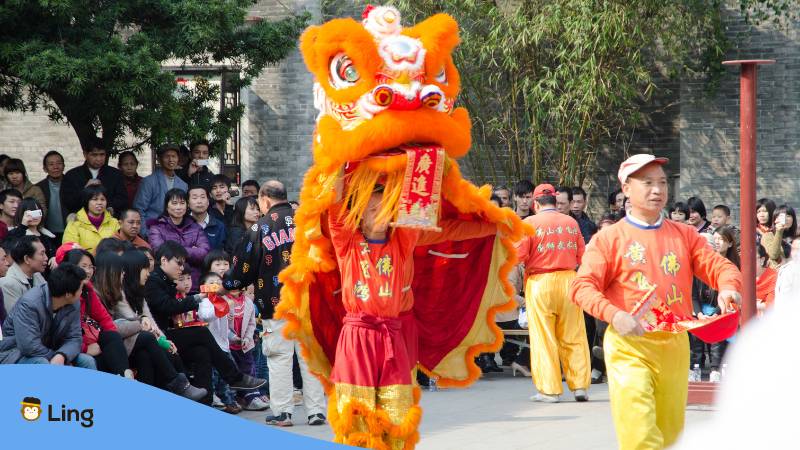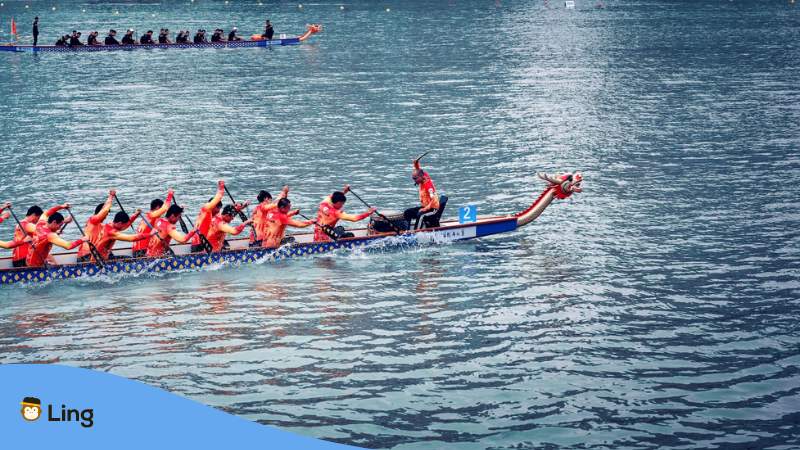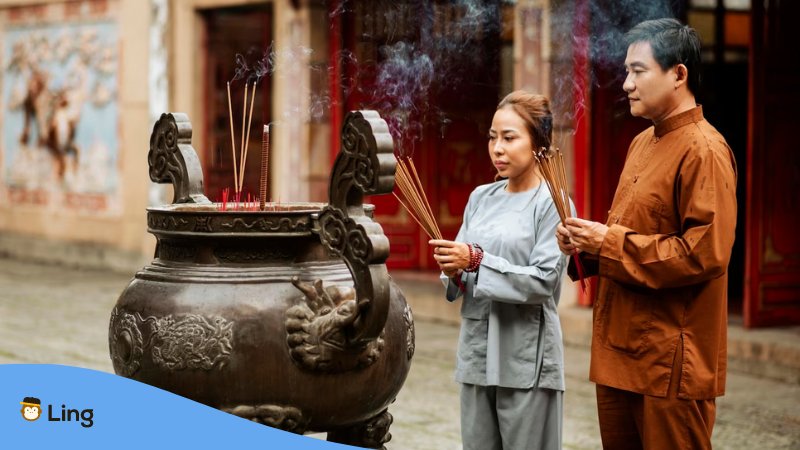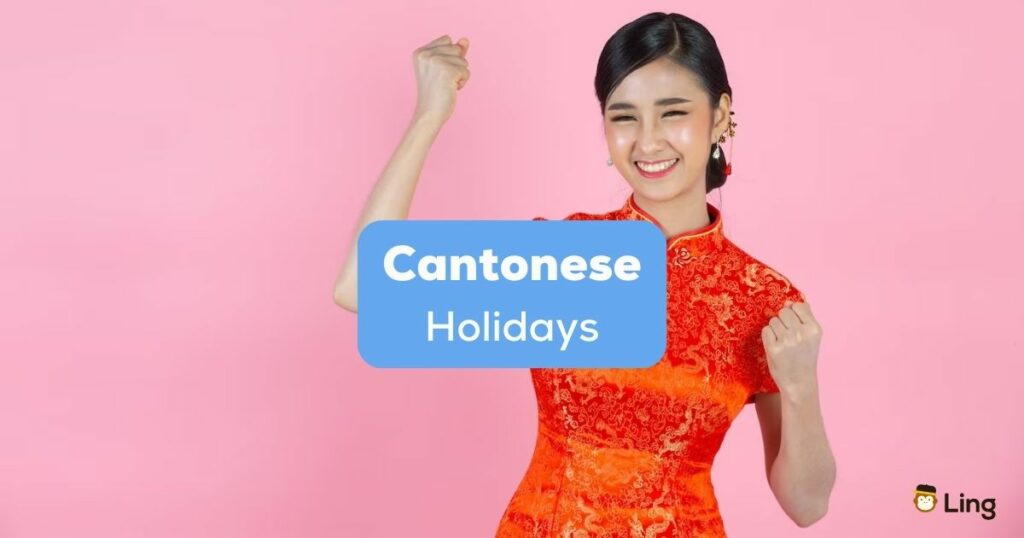Cantonese holidays, or “節日” (zit3 jat6), are like a symphony of sights, sounds, and smells in Chinese culture. Think heart-pounding drums at the Dragon Boat Festival.
Picture lanterns twinkling like stars during the Mid-Autumn Festival.
And the food!
The sticky rice dumplings are a must-try. It’s a beautiful mash-up of time-honored traditions and modern fun.
And guess what? Learning about these traditional Chinese festivals is a fantastic way to dive deeper into the Cantonese language.
But here’s something you might not know.
These Chinese holidays don’t play by the rules of our usual Gregorian calendar. They march to the beat of the Chinese lunar calendar, “農曆” (nung4 lik6). Each celebration has its own special spot on the calendar and unique customs.
Want to know more?
Let’s take a closer look at their stories. And just for fun, can you guess which holiday is considered the most important in the Cantonese calendar? Let’s find out together!
New Year’s Day (元旦)
We kick off with New Year’s Day, or “元旦” (jyun4 daan3), on January 1st.
On this day, families come together, share a hearty meal, and exchange “利是” (lai1 si6) or red envelopes with money.
It’s a tradition believed to bring good luck for the year ahead.

Lunar New Year/Spring Festival (春節)
Next, we’ve got the Lunar New Year, or “春節” (ceon1 zit3). It’s not just a big deal. It’s the biggest deal!
Recognized as the most important holiday in the Cantonese calendar, it falls between January 21st and February 20th. Families reunite, feasts are shared, and lion dances fill the streets.
Homes get a good clean and are decked out in red. Why? For good luck, of course.
The holiday stretches over 15 days, wrapping up with a Lantern Festival.
So, if you guessed Lunar New Year as the most important holiday, you’re spot on!
Ching Ming Festival/Qingming Festival (清明節)
Next in line is the Ching Ming Festival, or “清明節” (cing1 ming4 zit3), which is observed in early April.
Also known as Tomb-Sweeping Day, families pay a visit to gravesites. They clean them up and make offerings.
It’s a day for remembering and honoring ancestors – a key part of Cantonese culture.
Labour Day (勞動節)
Labour Day, or “勞動節” (lou4 dung6 zit3), rolls around on May 1st. It’s a day to tip our hats to workers and their contributions.
In Hong Kong, it’s a public holiday, and many Cantonese people enjoy a well-deserved day off.
But it’s not just about relaxation.
Parades and demonstrations are common, as it’s a day to advocate for workers’ rights.
You’ll see workers from various industries marching in solidarity, banners held high. It’s a powerful reminder of the strength of unity.
Buddha’s Birthday (佛誕)
Moving on, we celebrate Buddha’s Birthday, or “佛誕” (fat6 daan3). This holiday falls on the 8th day of the 4th lunar month, usually in May.
It’s a day to honor the birth of Buddha. Temples are filled with lanterns and devotees who come to pay their respects.
Vegetarian meals are common, reflecting Buddha’s teachings on non-violence and compassion.

Dragon Boat Festival (端午節)
Then comes the Dragon Boat Festival, or “端午節” (dyun1 ng5 zit3), on the 5th day of the 5th lunar month, usually in June.
This holiday is famous for its dragon boat racing, where teams paddle in long, decorated boats to the beat of drums. It’s a thrilling spectacle!
Another highlight is the sticky rice dumplings, or “糉” (zung2), wrapped in bamboo leaves. They’re a tasty tradition tied to this festival.
HKSAR Establishment Day (香港特別行政區成立紀念日)
Next on our list of Cantonese holidays is HKSAR Establishment Day, or “香港特別行政區成立紀念日” (hoeng1 gong2 dak6 bit6 hang4 zing3 keoi1 sing4 laap6 gei2 nim3 jat6), on July 1st.
This day marks the end of British rule in 1997 and the establishment of the Hong Kong Special Administrative Region.
It’s a public holiday in Hong Kong, often marked by ceremonies, parades, and fireworks. The ceremonies are solemn and official, with speeches and flag-raising.
The parades, on the other hand, are vibrant, showcasing the city’s diversity and spirit.
And the fireworks? They light up the night sky, a dazzling display of Hong Kong’s resilience and hope.
Mid-Autumn Festival (中秋節)
As we move into the latter part of the year, we celebrate the Mid-Autumn Festival, or “中秋節” (zung1 cau1 zit3), on the 15th day of the 8th lunar month, usually in September.
It’s a time to appreciate the full moon and express gratitude for the harvest.
Mooncakes, a type of pastry with various fillings, are a must-have treat. Families and friends also gather to light lanterns, adding to the festive atmosphere.
National Day/Golden Week (國慶日)
Following closely, we have National Day, or “國慶日” (gwok3 hing3 jat6), observed on October 1st. It celebrates the founding of the People’s Republic of China.
In mainland China, it kicks off the “Golden Week,” a seven-day holiday period.
It’s a public holiday in Hong Kong, and various activities, such as fireworks and concerts, are held to celebrate.

Chung Yeung Festival (重陽節)
Next, we have the Chung Yeung Festival, or “重陽節” (cung4 joeng4 zit3). This festival falls on the 9th day of the 9th lunar month, usually in October.
It’s another day for honoring ancestors, with families visiting gravesites to clean them and make offerings. Also, it’s a day for hiking and enjoying the outdoors, which is believed to bring good luck.
Christmas Day (聖誕節)
As the year winds down, the Cantonese people celebrate Christmas Day, or “聖誕節” (sing3 daan3 zit3), on December 25th.
While not a traditional Chinese holiday, it’s widely observed in Hong Kong due to Western influences.
It’s a public holiday filled with festive decorations, gift exchanges, and traditional Cantonese meals. Churches also hold services to commemorate the birth of Jesus Christ.
Boxing Day (節禮日)
Finally, we have Boxing Day, or “節禮日” (zit3 lai5 jat6), on December 26th. This public holiday in Hong Kong, rounding up the year’s major public holidays, is a day for relaxation after the Christmas festivities.
Many people spend the day visiting friends and family or shopping, as many stores hold Boxing Day sales.
Explore The Cantonese Holidays With Ling
What a journey through Cantonese holidays, right? But the exploration doesn’t have to end here.
With the Ling app, you can dive deeper into not just Cantonese but over 60 other languages too!
Ling makes language learning interactive and fun. It’s your pocket-sized tutor, ready whenever you are.
And the best part?
You can start today! The Ling app is available on both Google Play and the App Store. Join the Ling community, and let’s keep the cultural journey going. See you there!



































































